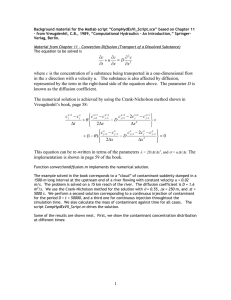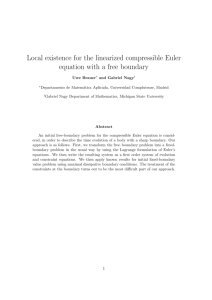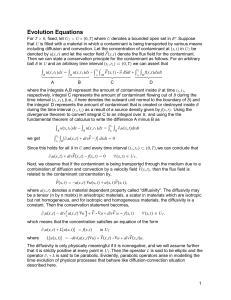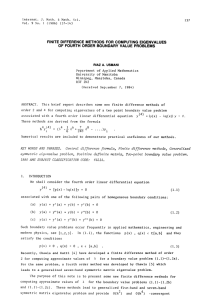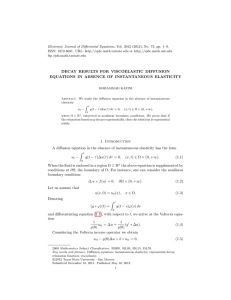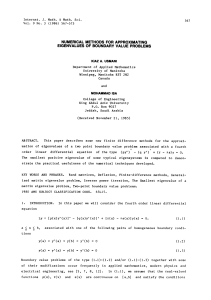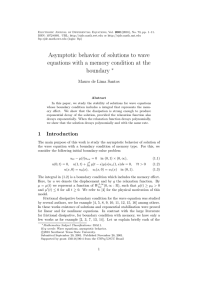Background material for the Scilab script “CompHydraulicsII_Script.sce” based on Chapter
advertisement
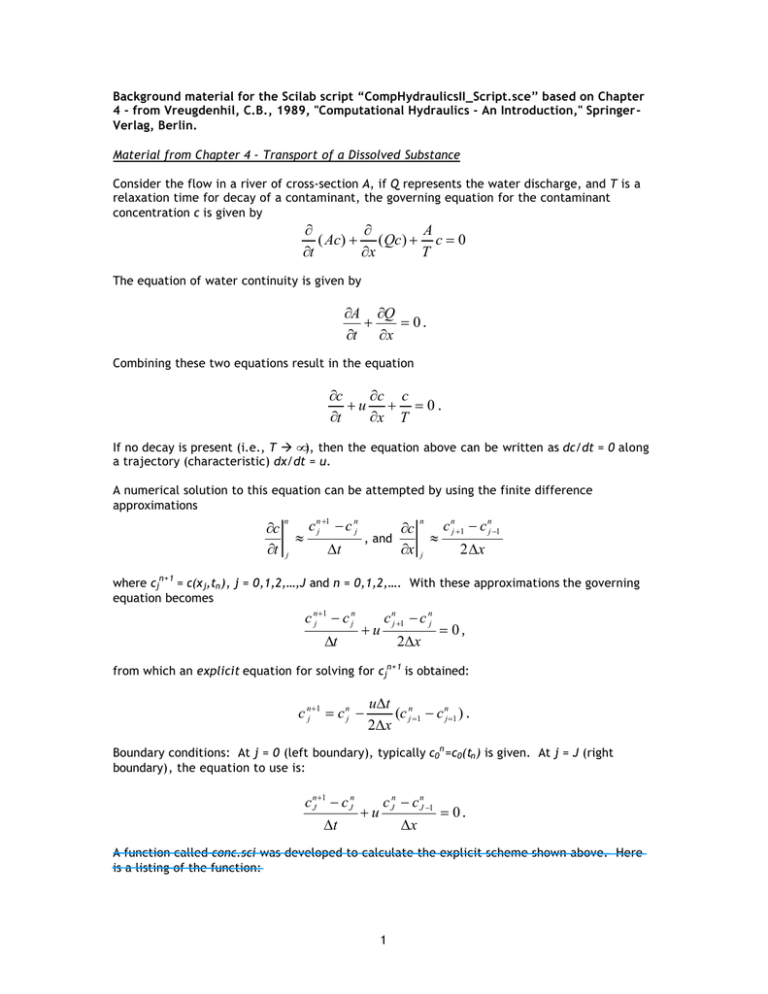
Background material for the Scilab script “CompHydraulicsII_Script.sce” based on Chapter 4 - from Vreugdenhil, C.B., 1989, "Computational Hydraulics - An Introduction," SpringerVerlag, Berlin. Material from Chapter 4 - Transport of a Dissolved Substance Consider the flow in a river of cross-section A, if Q represents the water discharge, and T is a relaxation time for decay of a contaminant, the governing equation for the contaminant concentration c is given by ∂ ∂ A ( Ac) + ( Qc ) + c = 0 ∂t ∂x T The equation of water continuity is given by ∂A ∂Q + = 0. ∂t ∂x Combining these two equations result in the equation ∂c ∂c c +u + = 0. ∂t ∂x T If no decay is present (i.e., T à ∞), then the equation above can be written as dc/dt = 0 along a trajectory (characteristic) dx/dt = u. A numerical solution to this equation can be attempted by using the finite difference approximations ∂c ∂t n ≈ j c nj +1 − c nj ∂c , and ∂x ∆t n ≈ j c nj +1 − c nj −1 2 ∆x where cjn+1 = c(x j,tn ), j = 0,1,2,…,J and n = 0,1,2,…. With these approximations the governing equation becomes c nj +1 − c nj ∆t +u c nj +1 − c nj 2∆x = 0, from which an explicit equation for solving for cjn+1 is obtained: c nj +1 = c nj − u∆t n (c j =1 − c nj=1 ) . 2∆x Boundary conditions: At j = 0 (left boundary), typically c0n =c0(tn ) is given. At j = J (right boundary), the equation to use is: c nJ +1 − c Jn c n − c nJ −1 +u J = 0. ∆t ∆x A function called conc.sci was developed to calculate the explicit scheme shown above. Here is a listing of the function: 1





